Rituals
Common Wedding Rituals and What They Really Mean
These days there are many different “unity" ceremonies that couples will perform to symbolically unite them as a couple. Some of them I’m sure you’ve seen and others may be unfamiliar to you. While some are more spiritual and based on religious practices, others were born out of creativity. Here is a cumulative list of many of the ceremony rituals and the history behind them to give you an idea of the meaning they hold.
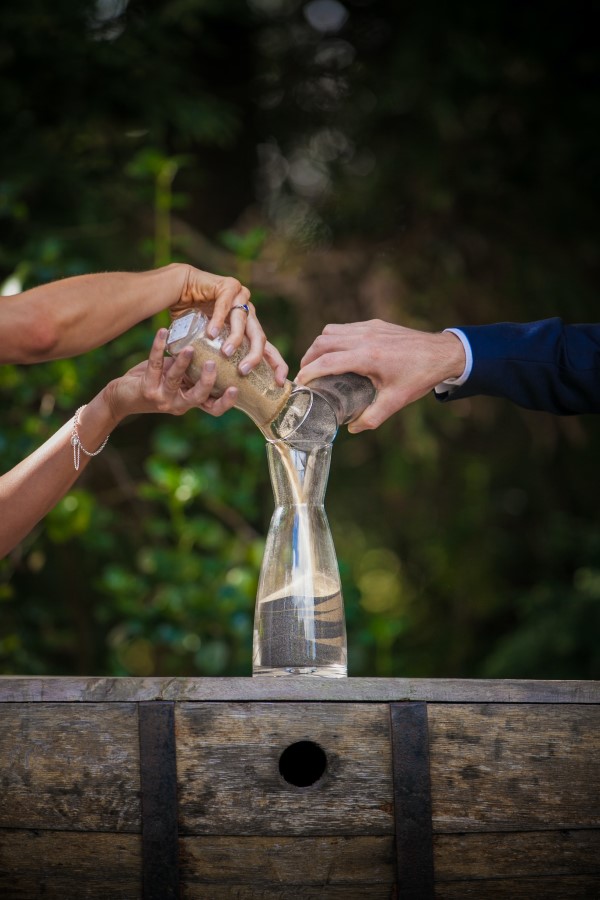
Sand Ceremony
The sand ceremony is very similar to the unity candle. Rather, other than a candle, the bride and groom each have vials of sand (typically of different colors) that are poured together into a larger glass container. It is said that once the sand is poured and combined, the sand can never be divided again, just as the sanctity of marriage can never be divided and broken. The sand ceremony is very popular amongst beach themed weddings.
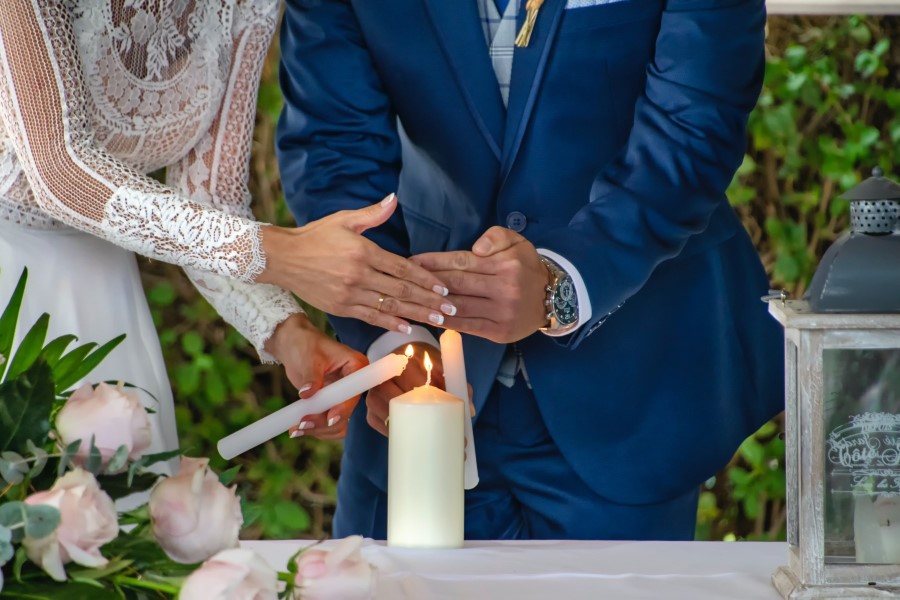
Candle Lighting
This is among one of the more popular ceremonies with couples today. In this case, two small candles are placed on the side of one larger candle. The bride and groom each take a small candle that is pre-lit and together, they light the large candle in the middle. This symbolizes 2 flames becoming one, just as their lives are.
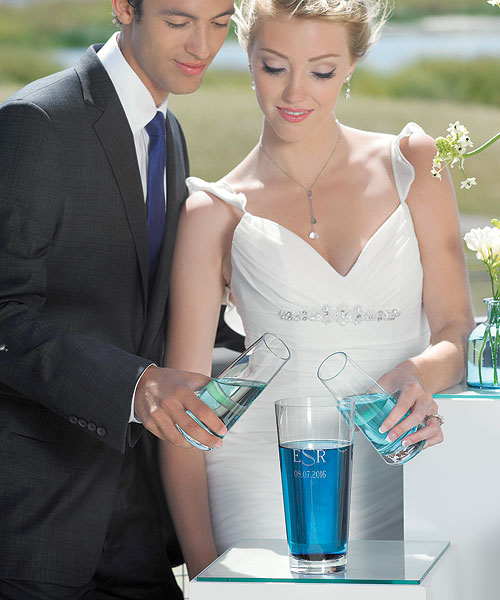
Water Blending
Instead of colored sand, some couples choose to substitute the sand for colored
water. Simple water with food coloring can create a unique and colorful unity ceremony. Not only can
you customize the colors to your wedding day scheme, but you can color the water to symbolize the
core values you want to symbolize in your marriage. For example, yellow water could represent
happiness and joy, while blue water could represent friendship and
health. Mixed, green represents growth, stability, and harmony. You can customize this to whatever
colors and representations you would like.
An interesting take on the water ceremony is where the
individual vials of water have coloring in them, and the center container has some water with a
little bleach mixed in. When the couple pours the water together, the colors disappear, and the
water runs clear due to the bleach. This could have spiritual meaning where two lives of sin are
becoming pure together under God. Or to eliminate religion from the ceremony, it could represent two
individuals coming together to create a new pure start together.

Tree Planting
This is a very eco-friendly, green option for a unity ceremony! Perfect for an
outdoor ceremony whether it is a beach wedding, in a garden or forest.
The tree planting ceremony can be performed as follows:
- Set up at the altar to include potted tree (often taken from a special place, whether it be a parent’s home or a location special to the couple), two small buckets of dirt (each can be collected at the bride and groom’s respective homes or from each set of parents’ homes), and two gardening trowels. A small watering can can be placed up front if desired as well.
- Upon the mothers entrance, each mother approaches the front and scoops in a small amount of dirt from their small bucket before returning to their seat.
- During a specific song or reading, the bride and groom each add the remainder of the dirt to the large potted tree. The couple can water the plant together as well at this point.
- After the ceremony, take the potted plant, and transplant it at the newlywed’s home to symbolize putting down roots and longevity and strength within this marriage.
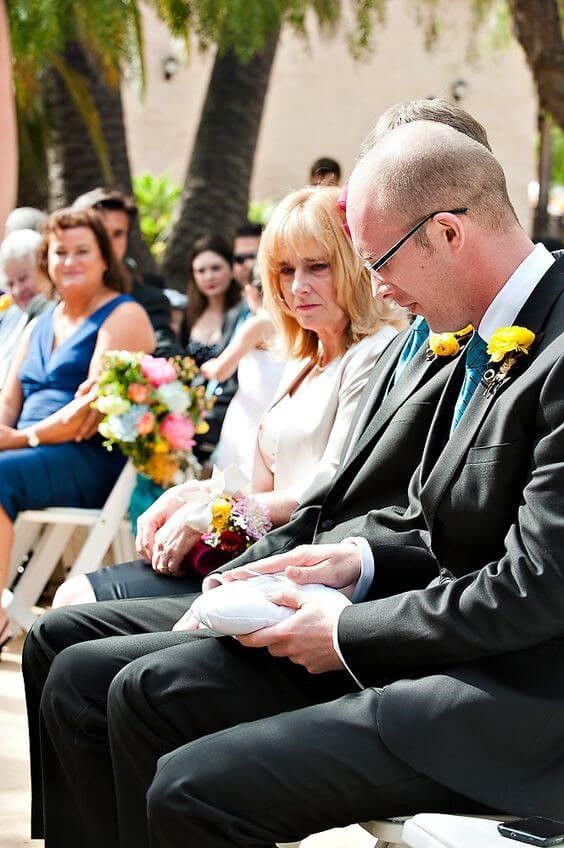
Ring Warming
Unlike other ceremonies, passing the rings around is a way to include not just your parents but all the guests at your wedding, by having each person bless your bands. Prior to the wedding, two friends takes custody of the couple’s rings, tying them to two handkerchiefs. One ring goes down one side of the aisle, and the other goes down the opposite side, with every guest having a chance to hold the rings and bestow their blessings and positive thoughts toward the marriage.
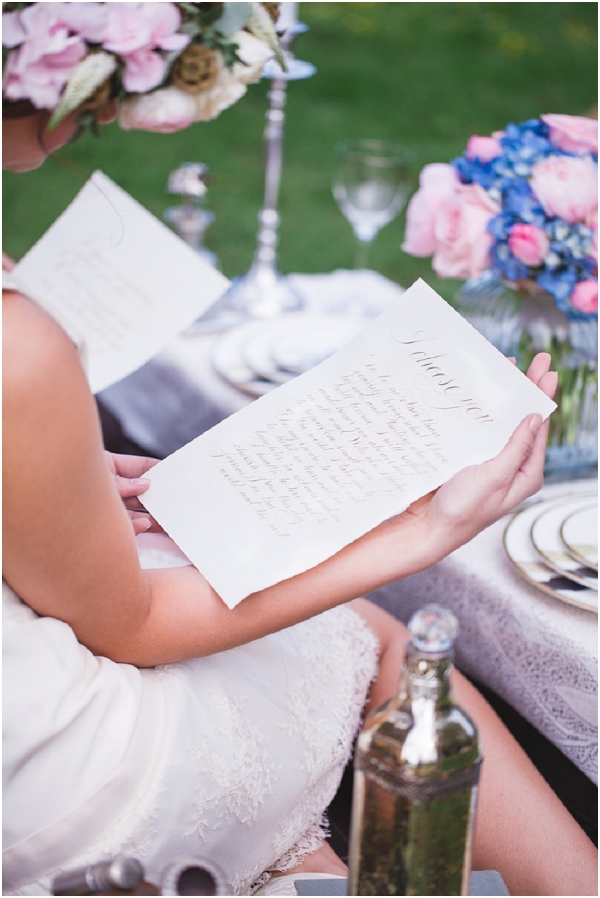
Love Letters
Just like the old times, writing love letters will never go out-of-style. To practice this ritual, you and your spouse will each need to write a love letter expressing your undying love for each other prior to your big day. The letters will then be placed inside a box during your wedding and will be given to each other during your anniversary or any important date in your relationship.

Wine Box
A wine box ceremony is a wedding ritual in which, during the proceedings of the wedding ceremony, a bottle of wine is enclosed in a box. Some couples opt to add an extra layer of meaning within the ceremony by including love letters to one another alongside the wine, or by designating a specific occasion (such as a future anniversary) when they will open the box, and drink the wine. The first step would be to pick a wine of your liking. Lastly, incorporate the box into your ceremony. Have the wine and the box on display on a table near the altar, along with anything you wish to include in the box. When the time comes, the officiant explains the significance of the wine box, and the reason why the wine has been chosen and how long is planned to be saved. Then, the couple will place the wine and any accompanying items into the box, close the lid, and lock or seal the box.
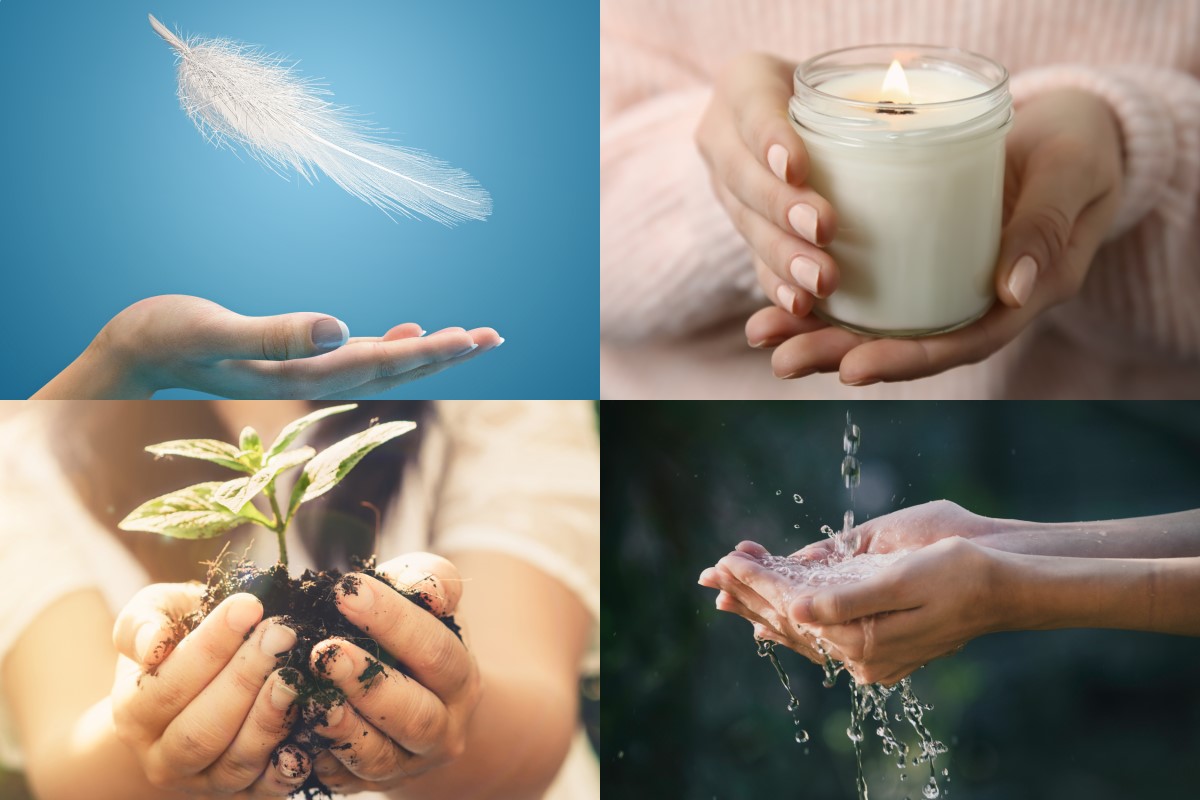
The Four Elements
The four elements of FIRE, EARTH, AIR and WATER are the foundations of life.
These four elements serve as powerful guides on how-to live-in synergy with nature. Every
breath of air relaxes us. Fire gives us strength and energy. We learn to flow and be more fluid like
water.
The earth reminds us to heal and nourish ourselves. When we align with the four elements, we become
more present and tap into the wisdom of life itself.
Select a person which represents each element, the person should bring the couple a gift as
element
representation to be present in the marriage along a life together.
The importance of each element
Fire: Your energy, taking action and continual movement
(candle, volcanic stones, flowers)
Earth: Your body, your mindset, your space (plant, tree)
Air: Your life-force, faith, trust, beliefs, determination
(feather, windchimes, bell, incense)
Water: Your creativity, flow, thinking, imagination and
bringing things into being (Water)
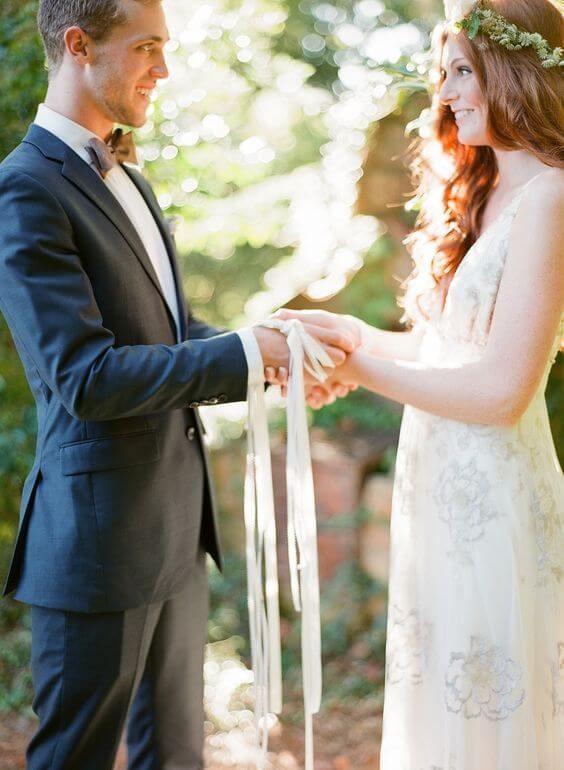
Handfasting
An ancient Celtic tradition dating back over 2000 years, the hand-fasting ritual finds the couple standing face to face, as a celebrant or family member binds their hands with a special cord or ribbon, as a symbol of their commitment and the binding of two lives. As well as having an Irish connection, it's also the ritual that birthed the phrase "tying the knot."
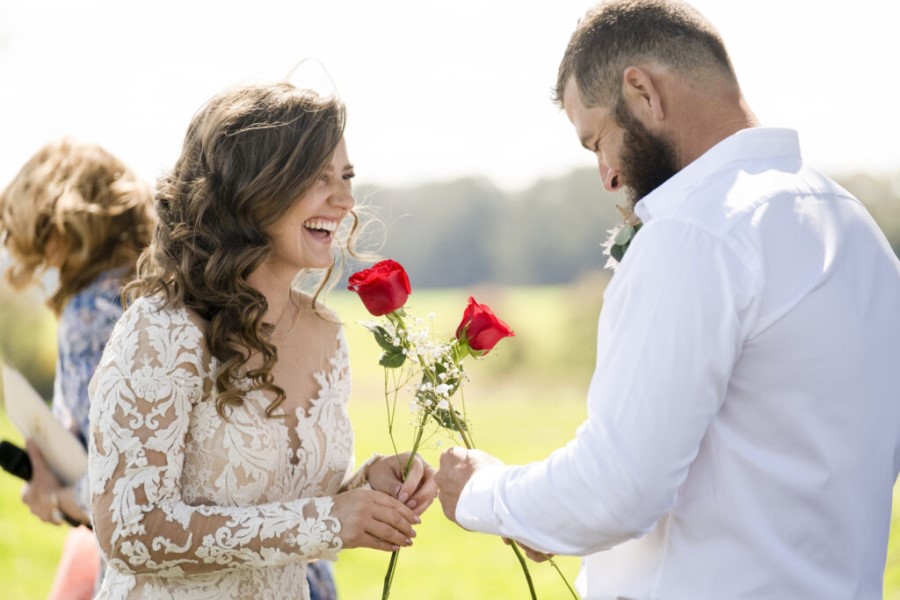
Rose Exchange
A rose ceremony can be performed after the exchange of vows. In this case, the bride and groom each have a rose that they exchange to one another that will symbolize their first gift to each other as a married couple. The roses can then be dried and preserved. Roses can also be given to each of the bride and groom’s parents as a gift to unite the families together.
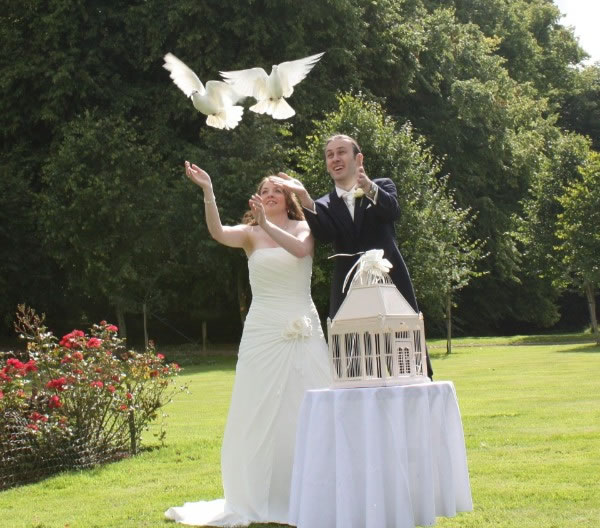
Butterfly/Dove Release
White doves represent the bride and groom as they begin their life’s journey together in purity and with no regrets of their past. Second, a wedding ceremony begins a journey of two lives working together for life’s happiness. The actions of the doves demonstrate this beautifully. Once released, the doves fly higher and higher together as they seek their way home. While still separate, they work as a team until they can find their bearings. Once they discover the direction they need to travel, these beautiful white doves climb to greater and greater heights. Similarly, a bride and groom do not know what the future holds for them. Their path may change many times along the way, but with faith and love they will find their way together. Just as the doves have the instinct to find their way home, the wedding couple will always know where “home" is, as home is wherever they are together. A poem or song can be read or sung at the time of release. Doves can be on display in a decorative cage for all guests to view before the release. Doves symbolize love, peace, happiness, and prosperity, and can be released outdoors as the couple leaves the church or during an outdoor ceremony. Trained white doves, ranging in number from two to 20, circle the couple and then fly away, denoting the newlyweds’ departure from their families and toward life’s new journey. It is said that if doves are seen on your wedding day it will assure a happy home, good fortune, and ever- lasting love.

Stone
The stone ceremony or “oathing stone ceremony" embraces the old European tradition to add a meaningful highlight to your wedding ceremony. The Oathing Stone is an old Scottish tradition where the Bride and Groom place their hands upon a stone while saying their wedding vows. Taken from the ancient Celtic custom of setting an oath in stone, inclusion of an oathing stone in the vows can be deeply moving. Etching your vows in stone is a sacred symbol across cultures. In the Scottish tradition an oath given near a stone or water was considered more binding. In some areas of Scotland, the couple would carve their names on a tree or a stone. Some of these bridal stones still exist across Scotland. During the reading of the Bride and Groom’s wedding vows, they hold an Oathing Stone in their hands. It is believed that holding the stone during the reading of the vows casts them into the stone. In a more modern version, the Oathing Stone can be engraved with the couple’s initials in the middle, accompanied by the groom & bride’s initials and date of their wedding. The source of an oathing stone, what minerals are in it, it’s color, or other characteristics are less important than what is said over the stone. Another version of the stone ceremony is where guests will write a loving message on each stone, or simply make a wish on a stone and the bride and groom will keep the collection at the end of the day.
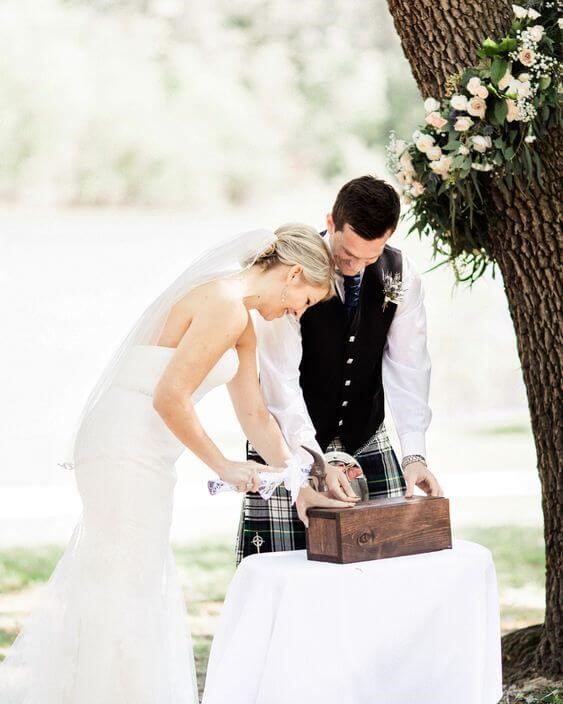
Time Capsule
The bride and groom should store nostalgic and memorable items inside a box. For example, a movie ticket from your first movie together as a couple. Once you’re both done placing the said items, you and your partner will need to take turns enclosing the box. It will then be open during your first wedding anniversary.

Paint Pouring
If you're looking for a fun way to personalize your wedding ceremony, you'll love the paint pouring ritual. The concept is simple: you and your partner pour two different paint colors onto a blank canvas to symbolize your lives coming together as one. The result is a one-of-a-kind piece of art that you can display in your home after you're married.
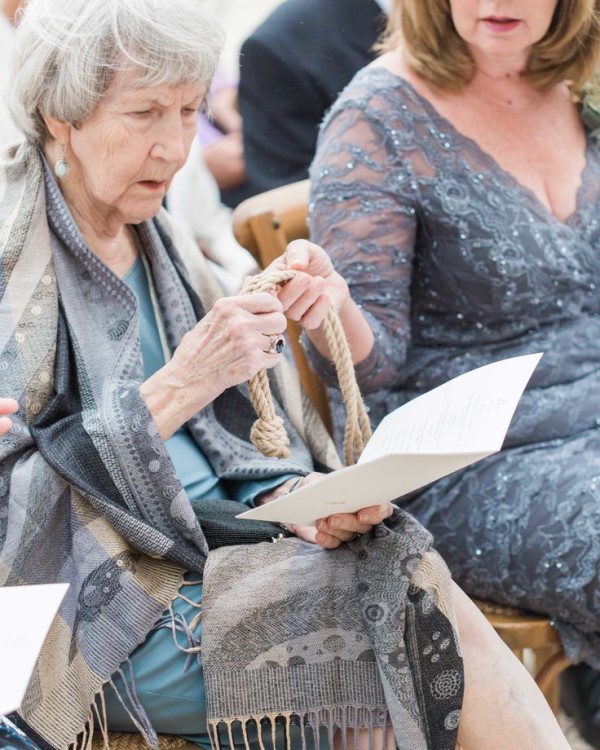
Rope Warming
Like the ring-warming ritual and handfasting ritual, the pass-the-rope ritual sees a length of rope being passed around, with each guest taking a quiet moment to set an intention for the couple, send them good wishes or say a silent prayer. The rope can then be used in a hand-fasting ritual or tied by the couple ("tying the knot") to symbolize a bond that only becomes stronger with pressure.
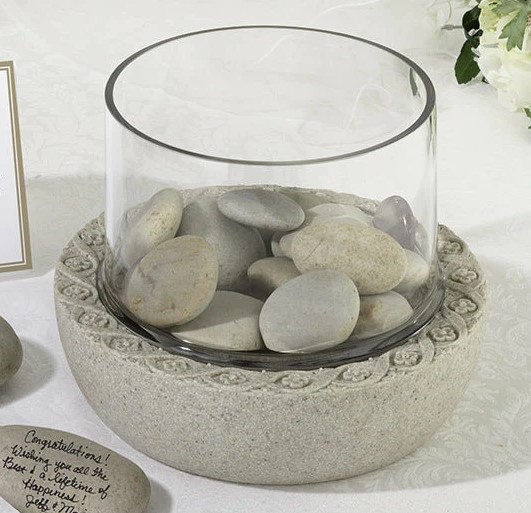
Stone Warming
Like the ring-warming ritual and hand-fasting ritual, the Stone Warming ritual sees stones being passed around, with each guest taking a quiet moment to set an intention for the couple, send them good wishes or say a silent prayer. Every guest put the stone in a container. The couple takes the vase to their home and puts it in the living room or couple’s room as a reminder of the guest’s intentions.
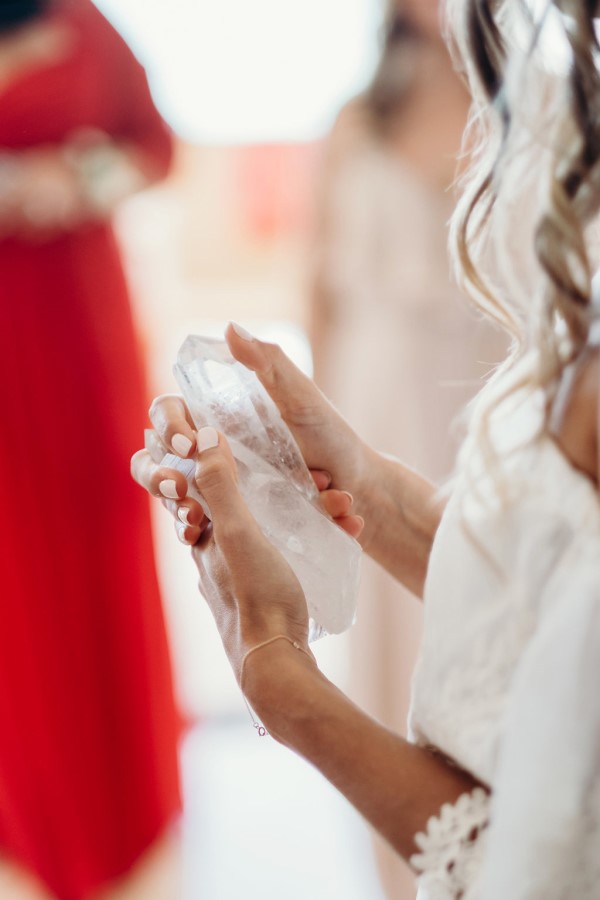
Crystals/Stones
Select the crystals you like most and choose a person for each one of them, each crystal/stone will represent the crystal/stone property in your marriage. Every person will deliver some words related to the crystal properties so the to the couple can have those properties in their marriage. The crystal/stone can be quartz, amethyst, selenite, ruby, pyrite, etc.
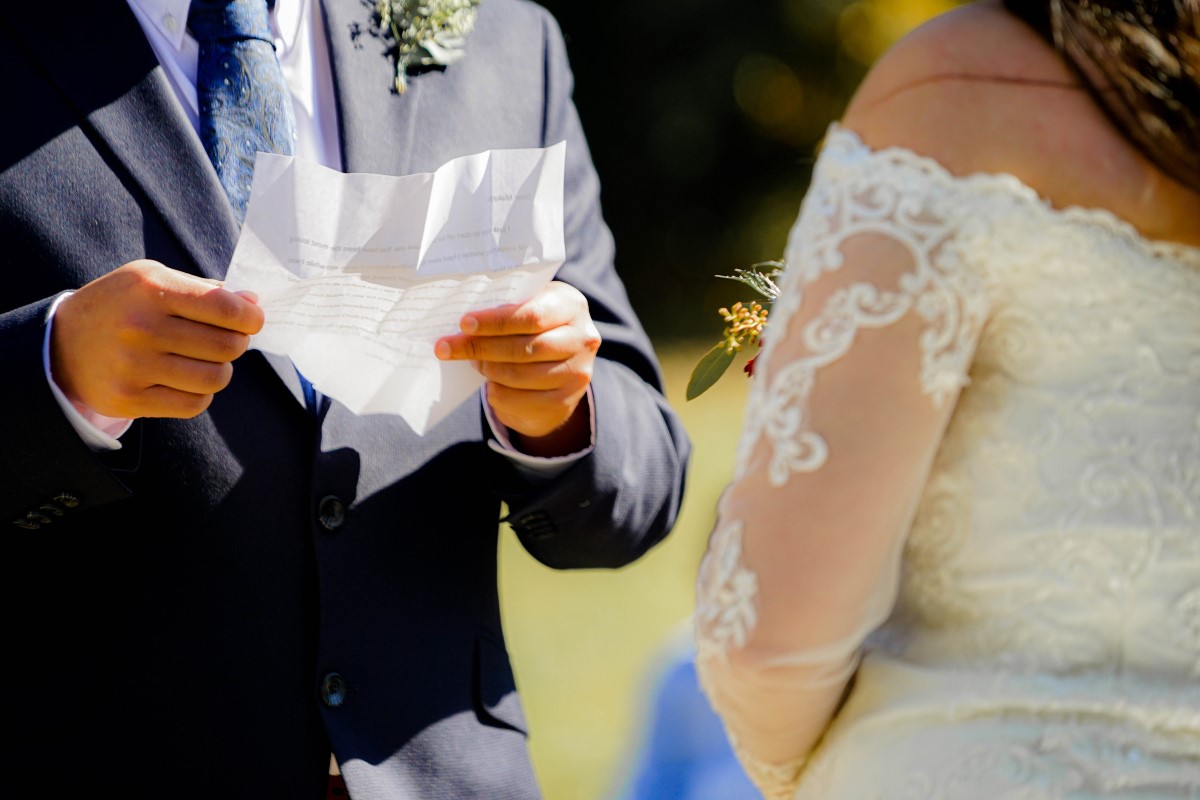
Vows Exchange
Whether religious, secular or civil, most wedding ceremonies include an exchange of vows. These might follow a certain format, or you might pen them yourselves from scratch. Either way, it's an opportunity to declare your love for each other, in front of family, friends and/or witnesses.
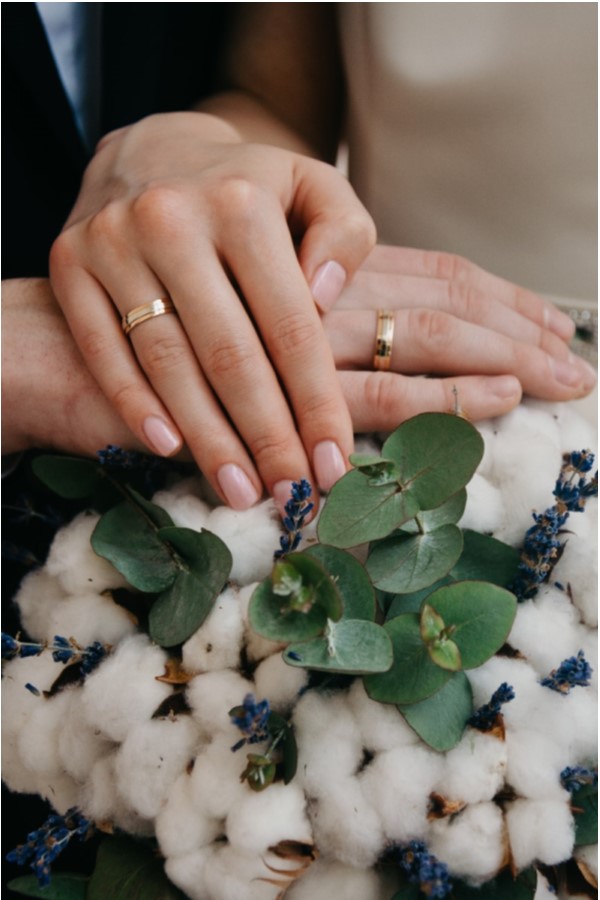
Ring Exchange
The ring exchange finds the couple exchanging rings and pledging their commitment to one another. The accompanying words may follow a format or be written from scratch by the couple or officiant. This ritual dates to ancient Egypt, with the ring serving as a symbol of the couple's eternal love.
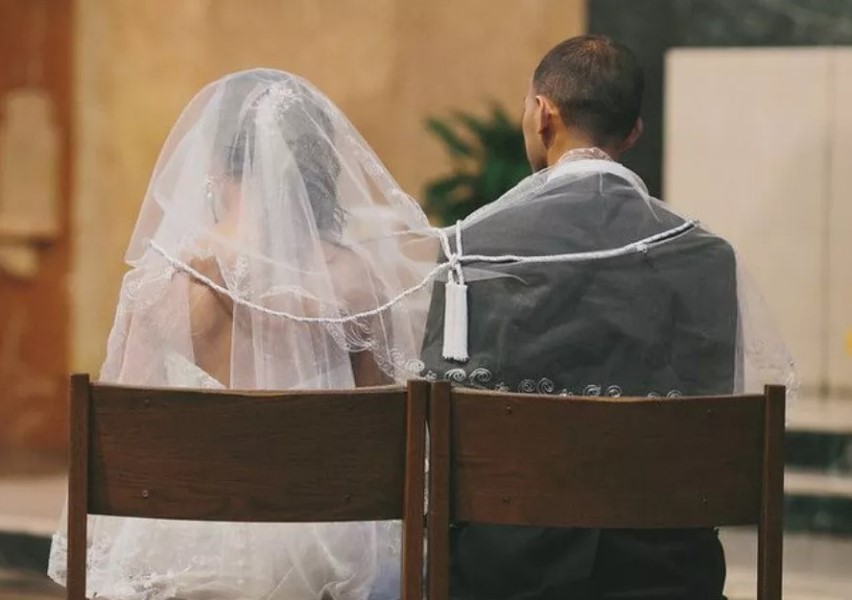
Lasso
This tradition is usually associated with Hispanic and Filipino families. A lasso or rope is placed around the bride and groom’s shoulders in the form of an “8" (the infinity symbol) after they have exchanged their vows to symbolize their everlasting union. This is usually done by the officiant; however, family members can also take part in this ritual. The couple wears the lasso throughout the remainder of the service. It is sometimes made of rosary beads, white ribbon, orange flowers, fabric, silver, crystal or elaborately painted wood. It can also be placed around the couple’s necks, or wrists. If you have children, they may also be included as they will be a part of the new family.
